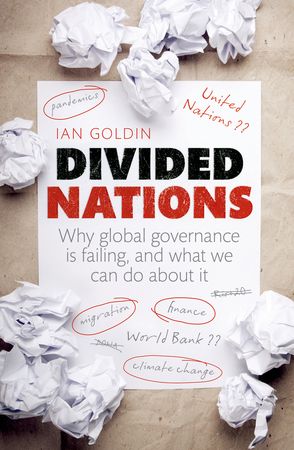![DWlogo3-194px[1]](http://politicsinspires.org/wp-content/uploads/2013/01/DWlogo3-194px1.png) Social democracy seems perpetually at a crossroads. But today, more than a hundred years after the first of the parties affiliated to the Second International won a plurality in a parliamentary election (in Finland in 1907; Anderson, 1992, 307), social democrats may finally be running out of rope. All the main European social democratic parties are facing a crisis, registering at long last endlessly postponed questions about their fundamental purpose.
Social democracy seems perpetually at a crossroads. But today, more than a hundred years after the first of the parties affiliated to the Second International won a plurality in a parliamentary election (in Finland in 1907; Anderson, 1992, 307), social democrats may finally be running out of rope. All the main European social democratic parties are facing a crisis, registering at long last endlessly postponed questions about their fundamental purpose.
As with the last great crisis of social democracy in the 1970s, today’s stark choices are being posed as the result of a major economic shift within capitalism: the deep disruption of capital accumulation as a consequence of the crisis in global financial markets unleashed in 2008. Social democrats have been dealt a tremendous double whammy. On the one hand, their decade-long strategy of full accommodation to neo-liberalism in order to skim off the surplus for ameliorative social spending has collapsed. On the other, contrary to expectations, the crisis has not thus far unseated neo-liberalism as the reigning economic paradigm, and financiers and the political right have neatly turned the tables on the centre-left. The big banks, having caused the crisis in the first place and led governments to borrow vast sums to come to their aid, have successfully redefined the resulting fiscal deficits as entailing cuts to public spending and social protection.
Stuck in this quandary, social democracy is unlikely to be afforded any relief by the markets. Rather than giving way to a resumption of growth, the Great Recession shows every sign of turning instead into a Long Slump.
Nature, too, has some nasty surprises in store for us. As a result of global warming that has already occurred it is now too late to avoid ‘a cascade of local and regional “natural” disasters in the medium term’ (Barnes and Gilman, 2011, 43). Price shocks, supply disruptions, dislocations, the rising costs of urban coastal infrastructure and remediation is the shape of things to come.
Even when – if – growth resumes, it will not deliver on the promises with which it is being invested. A modelling exercise for the Resolution Foundation by the Institute for Employment Research and the Institute for Fiscal Studies finds that on the basis of annual average UK growth of 2.5 per cent from 2015-2020 – an optimistic scenario – and no further cuts in public spending, living standards will fall for low and middle income households by between 3 and 15 per cent (Brewer et al., 2012). Only the rich will escape this ravening maw of austerity.
Morbid symptoms
How have Europe’s social democrats responded to this conjuncture? The early signs are not propitious.
The politics of austerity is proving as disruptive as the economics. To the ‘zombie households, companies and banks’ of the post-crisis landscape (Giles, 2012) must now be added ‘zombie governments’. A horror show of decrepit political formations not seen since the inter-war years has been exhumed from the crypt and installed across Europe: national governments, externally-imposed technocrats, even – in Greece – a troika-dictated regimen ‘reminiscent of Austria in 1922, when a High Commissioner was posted to Vienna by the Entente – under League of Nations colours – to run the economy to its satisfaction’ (Anderson, 2012, 57).
Unsurprisingly, turnouts at elections are falling, but this has not prevented an anti-incumbency tide sweeping over Europe to which governing parties in country after country – Britain, Ireland, Spain, Portugal, France – have succumbed. The likelihood of continuing political volatility can be seen in the fact that, for the most part, their successors are prescribing even larger doses of the same awful medicine.
Against this backdrop, many social democrats – still desperate to haunt the ‘house of power’ (Weber, 1991, 194) – have begun to position themselves as the left wing of austerity.
One result of this posture is that social democracy is beginning to face significant challenges from the left. Thus far, existing party systems have just about contained the fallout. Greece, however, is the counter example. The Panhellenic Socialist Movement (PASOK) went into the May 2012 elections on the back of a 43.9 percent showing last time around but carrying heavy baggage as a signatory of the troika memorandum. The retribution it was dealt was impressive. PASOK slumped to 13.2 percent, a fall of some 2.2 million votes since 2009 (Mavris, 2012). The main beneficiary of this has been Syriza, the left coalition, which trebled its vote to 16.8 percent. The response of social democrats elsewhere in Europe has been to heap vitriol on Syriza and paint its leader, Alexis Tsipras, in the most lurid of colours. His crime? Opposing austerity and daring to put forward what amounts to a genuine social democratic platform.

From Keynesianism to neo-liberalism and back again
The difficulties facing social democrats today are deeply embedded in their history. Always more pleased with itself than its record would warrant, social democracy must now make a true reckoning with that history if it is to emerge from the current crisis as a continuing force for progressive change.
Social democrats first entered government in the inter-war period, ‘largely as temporary shock-absorbers in the great European turbulence that followed the Armistice’ (Anderson, 1992, 308). Part of their function was containment and suppression of political unrest. The widespread belief that they were moving with an inevitable historical current seemingly absolved them of the need for any specific economic programme of their own, and as a result they did not initially make their mark anywhere. ‘The conformism which has been part and parcel of social democracy from the beginning’, Walter Benjamin observed, ‘attaches not only to its political tactics but to its economic views as well’ (Benjamin, 1969, 258). In Berlin in 1923, the SPD’s Rudolf Hilferding was a model of economic orthodoxy; as was Philip Snowden in London in 1924, Chancellor in a minority Labour government that busied itself with nothing much besides RAF bombing of recalcitrant tribes in Iraq (Elliott, 1993, 38).
It was not political victory but total war that first installed social democracy in government with an effective economic programme of counter-cyclical demand management and welfare state expenditure. In this, social democrats were borrowing the clothes of two heirs of nineteenth-century liberal progressivism, Keynes and Beveridge (Elliott, 1993, 57). It was a fortuitous piece of political cross-dressing. With the Second World War and victory over fascism, there was a mass influx of workers into unions and politics across Europe. Combined with the unique circumstances of the post-war world, the stage was set for an extended period of broad-based economic growth that could accommodate both increased profit rates for capital and higher real living standards for labour (Anderson, 1992, 310).
Among the principal beneficiaries of this golden age was social democracy, which had now found its raison d’être:
“Keynesianism suddenly provided working-class political parties with a reason to be in office. It appeared that there was something to be done, that the economy was not moving according to natural laws, that economic crises could be attenuated and the waste of resources and the suffering alleviated if the state pursued anticyclical policies of demand management. If the economy was producing at a level below its capacity, given the existing stock of capital and labour, a proper government policy could increase output until it approached the economy’s full potential.” (Przeworski, 1986, 208)
The overall weaknesses of this posture eventually became clear. In particular, redistributive social spending was linked to the life of the post-war boom. Even before the oil shocks of the 1970s the terms of this boom were being called into question, as productivity waned and capitalists facing declining rates of profit sought new ways to outflank mass trade union movements. When the onset of stagflation in the 1970s undermined Keynesianism, social democrats had no alternatives to hand.
A few years later the verdict was in. New right-wing governments were installed across the social democratic heartland of northern Europe. ‘Their overall mission’, in Perry Anderson’s summation, ‘was to change the relation of forces between capital and labour, where necessary – principally in Britain and America – after tough class struggles to crush resistance to a new order. Deregulation, tax reduction, de-unionisation and privatisation became the main engines of a sustained drive to install a neo-liberal economic framework’ (Anderson, 2001, 5). The terms had been set for the 1980s and 1990s.
We are all familiar with the end of this story. The onset of a long period in opposition for social democratic standard-bearers such as Labour in Britain and the SPD in Germany, coupled with continuing slow growth, high unemployment and falling unionisation, led the parties of the Socialist International into a comprehensive accommodation with neo-liberalism – albeit one wrapped in soothing social market rhetoric and homeopathic concessions at the margins.
Once again, the verdict is in. The so-called ‘Third Way’ was a ‘fair-weather formation’ totally incapable of withstanding the onset of the Great Recession (Anderson, 2001, 8). Governments of the centre-left have toppled like ninepins. Those social democratic parties fortunate enough to have been in opposition when the crisis struck are struggling to find their feet and advance a credible alternative to austerity.
Conservatives have an in-built strategic advantage over social democrats in the current era of austerity, in which a pared-down neo-liberalism now appears shorn of no-longer-affordable social accoutrements. The neo-liberal consensus never enjoyed the same legitimacy as the post-war consensus but was instead based on division. Part of the reason neo-liberalism has survived the catastrophic market failures of 2008 is that conservatives can still wield such division to their advantage. This is especially true when they are faced with opponents who seem above all else to be shy of reactivating the left/right divide for their own purposes.
Democratising capital
Now for the good news. Social democracy may be at an impasse, but history is once again on the march. From Cairo to Wall Street and from Santiago to the City of London, change is in the air (Schiffrin and Kircher-Allen, 2012). 2011 has already joined 1848, 1968, and 1989 as a ‘year of revolution’. More recently, a wave of industrial action has broken out across southern Europe, culminating in general strikes in Spain and Portugal and associated stoppages in Greece, Italy, France and Belgium. As part of this mass political mobilisation, growing numbers of people – especially the young – have begun to conclude that traditional policies to achieve equitable and sustainable social, economic and ecological outcomes simply no longer work. A full-scale legitimation crisis is in the making. Growing income and wealth disparities are seen to be corrosive of democracy. Governments are judged as lacking the will or capacity to regulate corporations effectively. A generation of young people expects to be worse off than their parents.

Confronted with these realities, more and more people have begun to ask ever more penetrating questions. They see traditional politics as no longer even attempting to address the issues that matter most. To do so would in fact require confronting the need for fundamental systemic change. But what would this entail? And what would a different system even look like?
The social pain arising from the continuing economic crisis has made it possible – for the first time in decades – to pose these questions in a serious fashion. But despite this new space for a major public debate about fundamental change, serious political challenges to the system – from ‘Occupy’ protestors, community activists, environmentalists and others – have thus far been contained by the continuing sense of a lack of viable alternatives. The only choices have seemed to be corporate capitalism, on the one hand, or state socialism, on the other. Neither seems capable of addressing the problems of the twenty-first century. Neither commands the intellectual and ideological support of a new generation of indignados. But is there any alternative?
Today there is a real need for – and hunger for – new understanding, new clarity, and a new way forward. At the same time, growing despair at the inability of traditional politics to address economic failings has fuelled an extraordinary amount of practical experimentation. Over the past decades, literally thousands of on-the-ground efforts have been developing. Even experts working on such matters have rarely appreciated the sheer range of activity.
In spite of – or perhaps because of – the lack of many of the social democratic features of European countries, a lot of this experimentation has been taking place in the United States. The Democracy Collaborative has been gathering information on the steadily building array of alternative economic institutions in communities across America. They include social enterprises that undertake businesses to support social missions; non-profit community development corporations (CDCs) and community land trusts that develop and maintain low-income housing; and community development financial institutions (CDFIs) that now invest more than $5.5 billion a year in creating jobs and housing and providing services for poor communities.
Employee ownership is on the rise. Around 11,000 businesses are now owned in whole or part by their employees, involving 10 million workers – three million more than are members of private sector unions. More than one in three Americans – 130 million – are members of urban, agricultural and credit union co-operatives. There are also 2,000 publicly-owned utilities that – together with co-operatives – provide some 25 percent of America’s electricity. More and more US states are looking into the creation of public banking systems along the lines of the long-standing public Bank of North Dakota (Alperovitz and Dubb, 2012; Alperovitz, 2013, forthcoming).
Most of these projects, ideas and research efforts have gained traction slowly and received little attention. But in the wake of the financial crisis they have proliferated. They illuminate how new community wealth-holding principles and approaches can work in practice and generate new solutions to political and economic challenges. It is slowly becoming possible to see how, by projecting and extending these practical experiments, the underlying structural building blocks of a new political-economic system might be assembled. What is needed – besides more capital to build up the sector over time – is an integrated and strategic effort to bring all this together and show how, in total, it forms the lineaments of a radically different system capable of delivering superior social, economic and ecological outcomes. The various institutions and elements already work in practice; now we must make them work in theory.
Although this self-conscious discussion about a ‘new economy’ is perhaps more advanced in the United States, Europe is no stranger to the institutions involved. Indeed, many of them have their origins in the political and economic struggles of the nineteenth- and twentieth-century European labour movement. The birth of the modern co-operative movement can be traced back to theRochdale pioneers, and now boasts a billion members worldwide (Co-operative Group, 2012, 29). In Italy and Spain – both on the front lines of austerity struggles – there are examples (the ‘Emilian Model’ as discussed byRestakis, 2000, and Mondragon) that show the power of these institutions when taken to scale in particular geographical locations. Developments in the US also have their roots in the nation’s own radical traditions, such as the labor republicanism of the Knights of Labor discussed by Alex Gourevitch in this series.
Taking sides
Social democracy today is bereft of an economic programme. So is the broader left, which has not yet developed an alternative to an unappealing and discredited state socialism. The slow and steady build-up of democratic wealth-holding institutions provides an obvious avenue for the re-animation and re-radicalisation of both, through the generation of a new set of economic institutions and political power bases. But this will require a long-term commitment to evolutionary change and a willingness to step outside of the false choices and immediate constraints of crisis management.
In doing this, the assumptions behind austerity must be called into question. It is a deep irony that the Great Recession is unfolding among some of the richest societies the world has ever known. While the relations of production remain contested, the forces of production have been reaching new heights. In the United States in 2011, the economy produced almost $200,000 (over £125,000) per family of four. In Britain in the same year, the equivalent number was almost $150,000 (almost £95,000). In Germany, it was nearly $160,000 (£100,000). Even in Greece, going through the agony of austerity, production reached over $100,000 (£63,000) per four-person household (OECD, 2012). This is wealth enough – especially given the resource constraints imposed by climate change and emerging energy, mineral, water and other limits to unending growth. The challenge is not technological but organisational and political. It is a matter of systemic design.
Work is already underway to flesh out the elements of what a system based on pluralist forms of democratic capital ownership might look like (Alperovitz, 2013, forthcoming). That there is political space to be occupied in this regard is increasingly evident. In the UK, Ed Miliband has acknowledged the need for a different institutional basis for Labour’s economic strategy with his embrace of ‘pre-distribution’ (Miliband, 2012). However, despite the valiant efforts of left Rawlsians to press down hard on pre-distribution and force it to yield some radical implications (O’Neill and Williamson, 2012; Doron, 2012), in Miliband’s formulation it seems a weak reed, relying on labour market interventions such as education and training to alter distributional outcomes. This is unlikely to achieve much. In Germany, where the workforce is highly skilled and high-tech manufacturing jobs have been retained, the price has been continuing stagnation of wage levels. That said, Miliband’s impulse is the right one.
For social democracy it eventually comes down to the need to take sides. Whose side are you on? Now is not the time for timidity, for all the old fears about frightening horses with manifestos for radical change; quite the reverse. The upside of an almost total disenchantment on the part of the electorate with politics-as-usual is that they are now ahead of the politicians in this game. People buy the argument that things are not working any more. They experience directly the growing inequity, the insecurity, the unfairness. They are no longer creatures of a discredited media. Now people want to hear, boldly and clearly, an authentic message about change that will make a difference.
Having been dealt out of the game for so long, the left suddenly has everything to play for again. As popular movements and new institutional developments converge, there is the glimpse of a new world in the making. Embracing these possibilities will require abandoning some of the mental furniture acquired from long residence in the house of power. For social democrats, it will also mean becoming – for the very first time in their conformist history – a political force willing to be as radical as reality itself.
Joe Guinan is a Senior Fellow at the Democracy Collaborative at the University of Maryland and Co-Director of the Next System Project.
With thanks to Gar Alperovitz, Steve Dubb, Martin Guinan, Patricia Harvey, Peter Harvey, Ben Jackson, Martin O’Neill, Emily Robichaux, Roux Robichaux, Peter Sparding and Stuart White.
This article is based on a longer piece published in the latest edition of ‘Renewal’.
This article is part of the Democratic Wealth series, hosted by Politics in Spires in partnership with OurKingdom.






1 Comment
Keynesianism is based on the conventional wisdom that public spending increases economic growth. When you look at the actual data this is not at all obvious. See Sydenhams Law of public spending and economic growth.